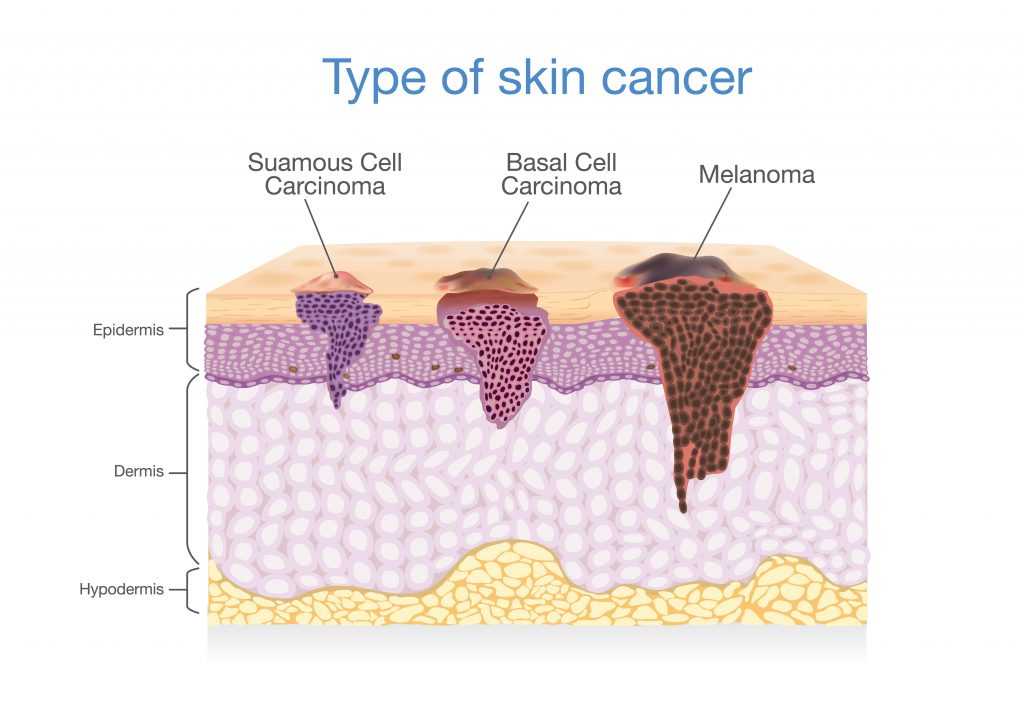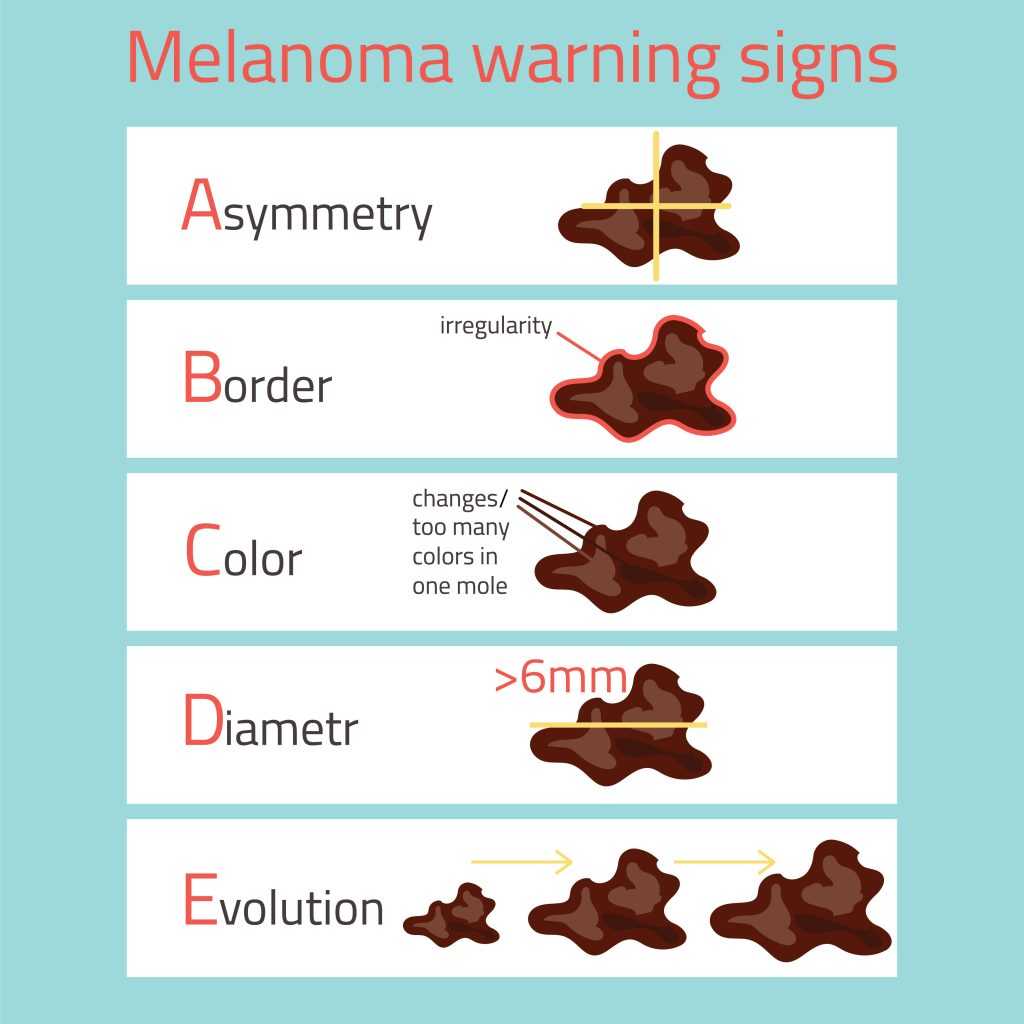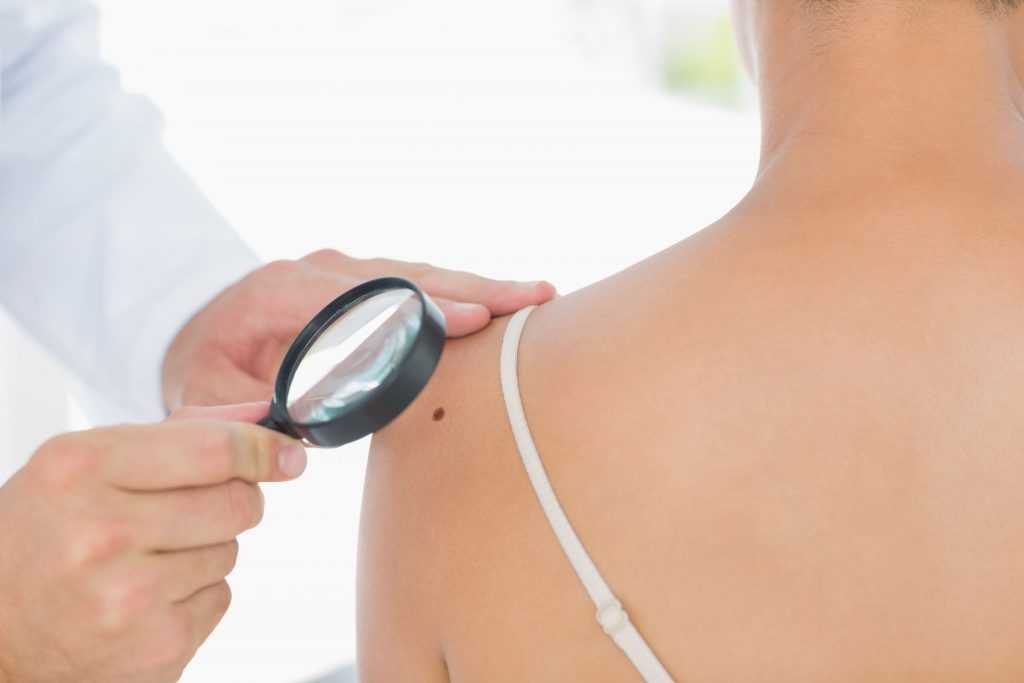What are the Health Benefits of an Annual Skin Exam?
Why should you get a full skin exam? This is not a question that we at Epiphany Dermatology take lightly. One of our primary missions is the eradication of skin cancer. To accomplish this goal, the early detection of skin cancer is key. According to the Centers for Disease Control and Prevention, skin cancer is the most prevalent form of cancer in the United States of America¹. Most often, skin cancer is caused by overexposure to ultraviolet (UV) radiation from the sun’s natural light or tanning beds. This UV radiation causes the affected skin cells to mutate. In some cases, the changed cells can multiply into malignant tumors and spread throughout the body.
Basal cell carcinoma is the most common type of skin cancer. Although it is considered the least dangerous of skin cancers, basal cell carcinoma can be painful and disfiguring. This is especially true in instances when those afflicted refrain from seeking immediate treatment.
Melanoma is the type of skin cancer; we are the most concerned. Although it is not as common as basal cell carcinoma, it is considered the deadliest of the skin cancers. The CDC estimates up to 91,270 Americans will be diagnosed with melanoma in 2018. Of that number, up to 9,320 are expected to die from melanoma². Every hour, one person in the United States will die from melanoma or related complications.
We find these statistics to be unacceptable. Most of these cases of melanoma are treatable, if early detection occurs. Patients who seek treatment within 30 days of biopsy, as compared to those who seek treatment 30 to 59 days later, have 5 percent increase in survivability. For those who wait, seeking treatment over 119 days after their biopsy, the survivability of their diagnosis is decreased by 41 percent³. It is tragic that most of these deaths are preventable by receiving a full skin exam by a dermatologist.
What to Expect During a Full Skin Exam?
 Getting a full skin exam is a fast and painless process. We encourage everyone to get a full skin exam, especially for those that live active outdoor lifestyles, have a history of skin problems, or frequently use tanning beds.
Getting a full skin exam is a fast and painless process. We encourage everyone to get a full skin exam, especially for those that live active outdoor lifestyles, have a history of skin problems, or frequently use tanning beds.
First, you will be are escorted to a private, exam room to provide a safe and comfortable environment for your skin assessment. Although patients are asked to undress for the exam, gowns are provided for warmth and modesty while sections of their skin surface are evaluated for any irregularities.
Here, you will be provided a gown and asked to undress for the exam.
Your dermatologist will ask a series of in-depth questions to determine any potential risk factors that you might have. It is important to answer these questions honestly and completely to ensure that the provider has all the information necessary to provide the best care and safest treatments.
Once your dermatologist has the information needed, your doctor will systematically inspect your skin, using their eyes and, sometimes, magnifying tools. This examination is detailed and often requires them to look all skin areas including: scalp, nail beds, buttocks, breasts, and genitalia. You can be well-prepared for the exam by wearing light make-up or no makeup, your hair styled to allow access to your scalp, and your nails free of polish, if possible. During the exam, your dermatologist will only expose areas of your skin they are actively assessing.
What are Dermatologists’ Looking for During a Full Skin Exam?
 During the skin exam, the dermatologist searches for any possible irregularities in the skin such as rough patches, papules, discolorations, unhealed sores, or unusual moles. The presence of moles is not necessarily a sign of illness. However, 54 percent of new melanoma’s are from previous moles. Therefore, moles are a point of interest during the visual exam. When assessing moles, the dermatologist evaluates the mole for asymmetry, irregular borders, discoloration, the size of their diameters, and their overall evolution of growth. In some cases, the dermatologist might recommend a skin biopsy.
During the skin exam, the dermatologist searches for any possible irregularities in the skin such as rough patches, papules, discolorations, unhealed sores, or unusual moles. The presence of moles is not necessarily a sign of illness. However, 54 percent of new melanoma’s are from previous moles. Therefore, moles are a point of interest during the visual exam. When assessing moles, the dermatologist evaluates the mole for asymmetry, irregular borders, discoloration, the size of their diameters, and their overall evolution of growth. In some cases, the dermatologist might recommend a skin biopsy.
I Was Just Informed That I need to Get a Skin Biopsy After a Full Skin Exam. Is This a Bad Sign? Should I Be Worried?
 Sometimes visual inspections are not enough to determine the origin of a skin irregularity. In these instances, your dermatologist would recommend a skin biopsy. To obtain a biopsy, the dermatologist numbs the skin at the area of concern, then extract a small sample of tissue. The sample required is often about the size of a sesame seed. When asked, patients describe the procedure as, “less painful than a flu shot.” After the sample is acquired, it’s examined under a microscope to determine what kind of skin lesion it is.
Sometimes visual inspections are not enough to determine the origin of a skin irregularity. In these instances, your dermatologist would recommend a skin biopsy. To obtain a biopsy, the dermatologist numbs the skin at the area of concern, then extract a small sample of tissue. The sample required is often about the size of a sesame seed. When asked, patients describe the procedure as, “less painful than a flu shot.” After the sample is acquired, it’s examined under a microscope to determine what kind of skin lesion it is.
Talking with Your Dermatologist After Your Skin Exam
One of the primary reasons for a full skin exam is to assess our patients for skin cancer. Our board-certified dermatologists will take the time to share with you what they have found during your skin exam. If there are any areas of concern, your dermatologist will guide you to make the best decisions and next steps for treatment options, if needed.
¹ (Division of Cancer Prevention and Control, 2018)
² (American Cancer Society, 2018)
³ (Conic RZ, 2018)
For more information about your Full Skin Exam, please contact Epiphany Dermatology and watch this very informative video, “Why it is important for you to get a full exam”.
Schedule Your Full Skin Exam at Epiphany Dermatology – Kansas City
Full Skin Exams are performed by Licensed Aestheticians overseen by Board-Certified Dermatologists at both our Riverside and St. Joseph, MO Locations.
Our Riverside Location:
805 NW Platte Rd., Suite 120
Riverside, MO 64150 | CLICK HERE for Directions
Phone: (816) 205-8120
SEND US AN E-MAIL
Our St. Joseph Location:
805 N 36th St., Suite D
St. Joseph, MO 64506 | CLICK HERE for Directions
Phone: (816) 205-8120
SEND US AN E-MAIL


